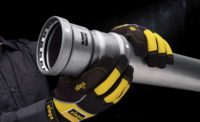Viega fittings meet highest seismic standards

Viega fittings met the highest standards for seismic durability in recent testing at an earthquake simulation facility.
The fittings were tested at 200 psi with compressed gas and at 300 psi with water at the Structural Engineering and Earthquake Simulation Laboratory (SEESL) at the University at Buffalo in December 2021. The fitting assemblies withstood acceleration factors up to SDs 2.0 for at least 30 seconds. The United States Geological Survey considers a 2.0 certification to be the highest level required in the most seismically active areas of North America.
That makes Viega the only fitting manufacturer whose press fittings have met the highest U.S. seismic standards at both 200 psi for gas and 300 psi for water.
“Viega fittings are designed and engineered to perform to the highest levels and that includes during earthquakes,” said Will Dutcher, sales strategy manager, Industrial. “Our customers use our fittings and valves in critical applications which is why we must manufacture them to be the highest quality and extremely durable.”
The lab tested two different assemblies using 7 meter x 7 meter shake tables, which moved the assemblies through six degrees of freedom. The first assembly consisted of 3/4-inch ProPress copper, MegaPress (with EPDM, FKM and HNBR sealing elements), and a mix of MegaPress stainless, ProPress stainless and 4-inch ProPress copper. The second was 4-inch MegaPress FKM, MegaPressG, and MegaPress Stainless transitioning to ProPress Stainless.
The Viega fittings were tested in conjunction with:
- International Code Council Evaluation Service (ICC-ES) AC156, the most widely recognized testing procedure referenced in American Society of Civil Engineers 7;
- International Building Code; and
- California Department of Health Care Access and Information (HCAI), formerly the Office of Statewide Health Planning and Development.
After previous seismic testing in 2016, Viega fittings met the requirements for Special Seismic Certification according to the California Building Code Section 1705.12 and the International Building Code Section 1705.12 for nonstructural components.
Watch the video below.
Looking for a reprint of this article?
From high-res PDFs to custom plaques, order your copy today!






